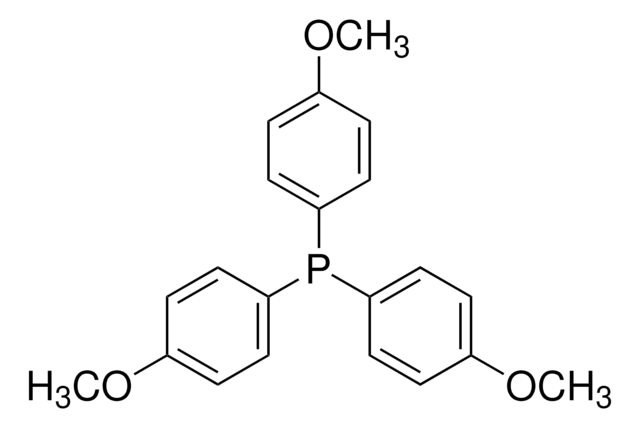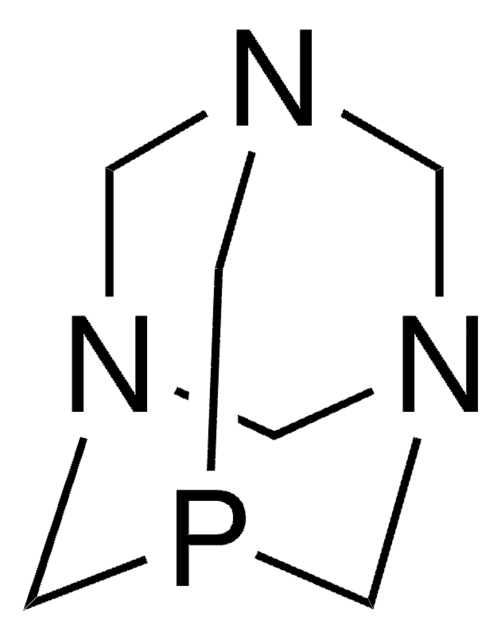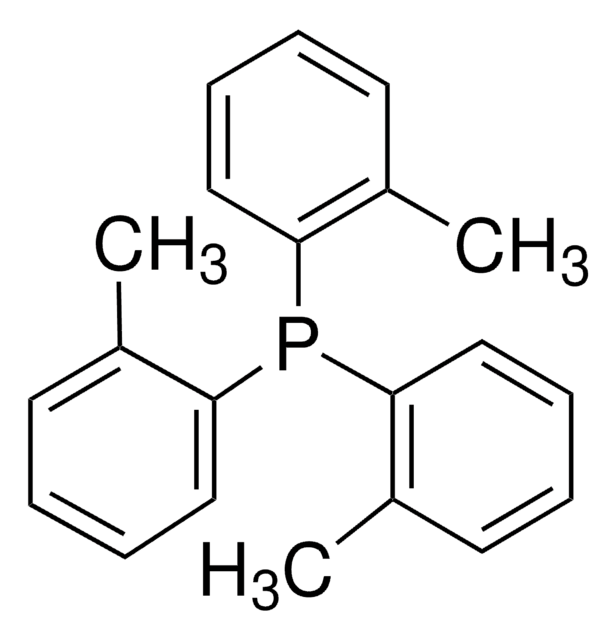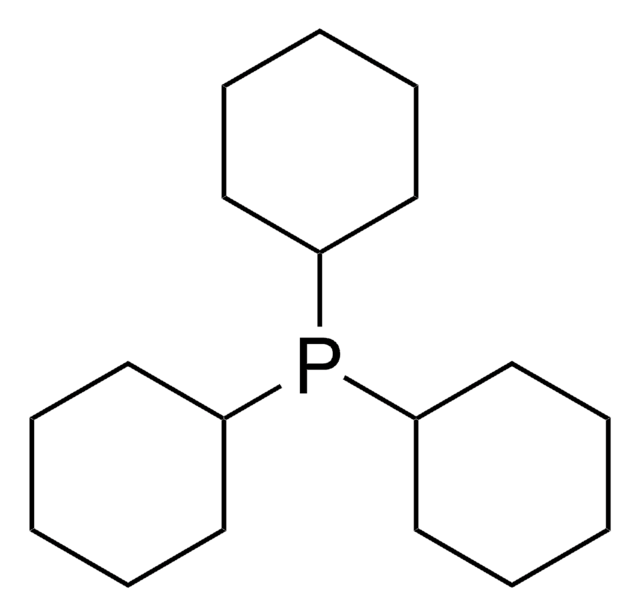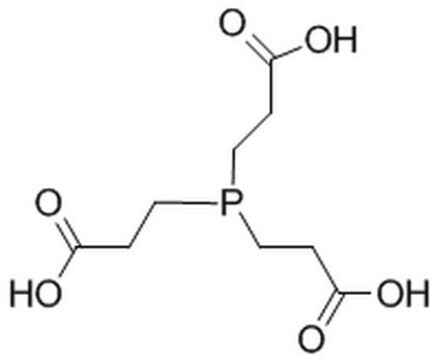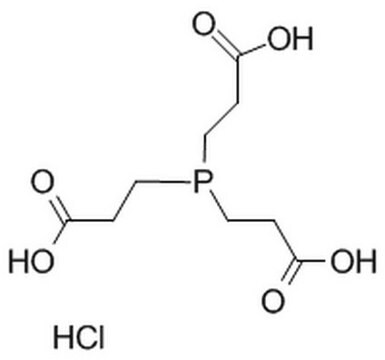777854
Tris(hydroxypropyl)phosphine
≥80%
Synonym(s):
THPP
Sign Into View Organizational & Contract Pricing
All Photos(3)
About This Item
Empirical Formula (Hill Notation):
C9H21O3P
CAS Number:
Molecular Weight:
208.24
MDL number:
UNSPSC Code:
12352128
PubChem Substance ID:
NACRES:
NA.22
Recommended Products
Assay
≥80%
form
liquid
reaction suitability
reagent type: reductant
density
1.136 g/mL at 25 °C
SMILES string
OCCCP(CCCO)CCCO
InChI
1S/C9H21O3P/c10-4-1-7-13(8-2-5-11)9-3-6-12/h10-12H,1-9H2
InChI key
YICAEXQYKBMDNH-UHFFFAOYSA-N
General description
Tris(hydroxypropyl)phosphine (THPP) is a reducing agent widely used for the reductive cleavage of disulfide bonds in small molecules in both aqueous–organic media.
Application
Tris(hydroxypropyl)phosphine can be used:
- As a reducing agent in the reduction of dehydroascorbic acid to ascorbic acid
- In the cleavage of disulfide bonds in small molecules
- As a catalyst in the conversion of polysulfides
Signal Word
Danger
Hazard Statements
Precautionary Statements
Hazard Classifications
Skin Corr. 1B
Storage Class Code
8A - Combustible corrosive hazardous materials
WGK
WGK 3
Flash Point(F)
Not applicable
Flash Point(C)
Not applicable
Choose from one of the most recent versions:
Already Own This Product?
Find documentation for the products that you have recently purchased in the Document Library.
Customers Also Viewed
Hairong Wang et al.
Biomaterials, 181, 310-317 (2018-08-11)
Tumor hypoxia is known to be one of critical factors that aggravate the tumor resistance to photodynamic therapy (PDT) in which oxygen is essential for tumor destruction. Herein, catalase, an enzyme to trigger hydrogen peroxide (H2O2) decomposition, is modified by
Victoria J Valerón Bergh et al.
Pharmaceutical development and technology, 23(8), 761-770 (2017-04-01)
Dry alginate foams intended for antibacterial photodynamic therapy (aPDT) of infected wounds were prepared. aPDT is a treatment modality involving light of appropriate wavelength, oxygen and a photosensitizer (PS) to produce radicals that attack biological targets (e.g. bacteria). The hydrophobic
Cyrille Megel et al.
Nucleic acids research, 47(2), 941-952 (2018-11-22)
RNA fragments deriving from tRNAs (tRFs) exist in all branches of life and the repertoire of their biological functions regularly increases. Paradoxically, their biogenesis remains unclear. The human RNase A, Angiogenin, and the yeast RNase T2, Rny1p, generate long tRFs
Kristine Opsvik Wikene et al.
Journal of photochemistry and photobiology. B, Biology, 171, 27-33 (2017-05-05)
Natural deep eutectic solvents (NADES) are a third class of liquids, separate from water and lipids. Some NADES, especially those containing organic acids, have been suggested to possess antimicrobial properties. Such properties may be advantageous when NADES are used as
Designing dendritic polymers containing phosphorus donor ligands and their corresponding transition metal complexes.
Dasgupta M, et al.
Coordination Chemistry Reviews, 233(19), 223-235 (2002)
Our team of scientists has experience in all areas of research including Life Science, Material Science, Chemical Synthesis, Chromatography, Analytical and many others.
Contact Technical Service



